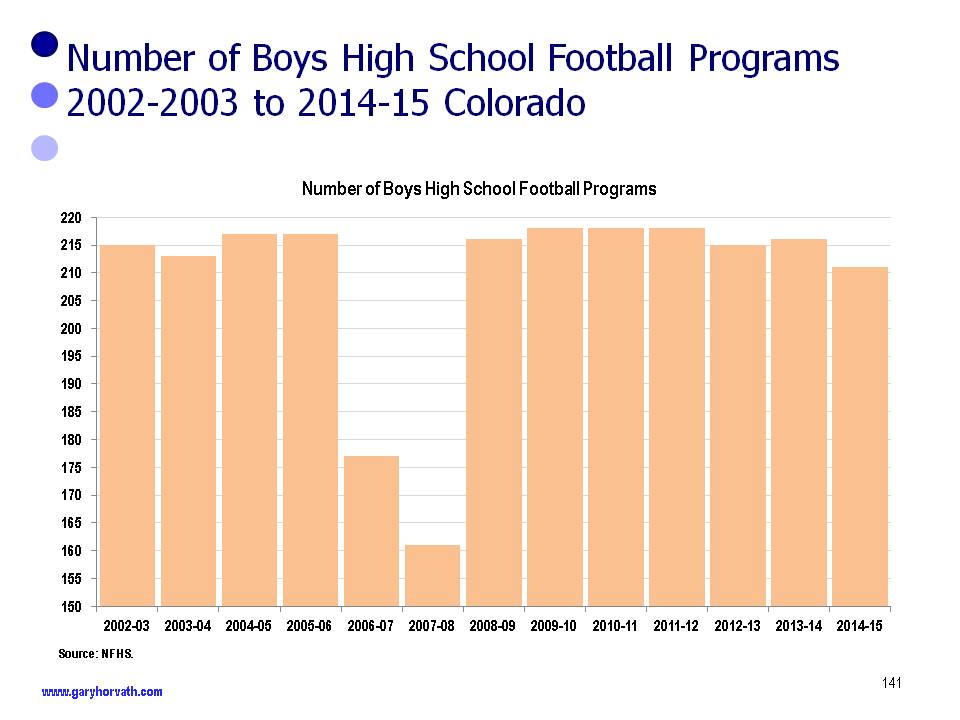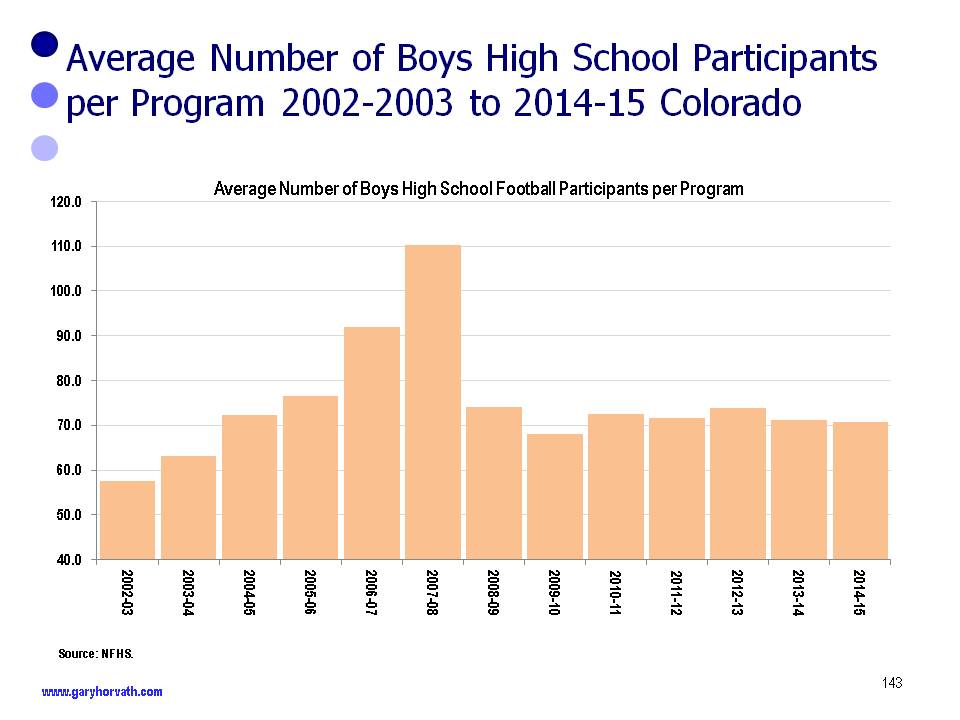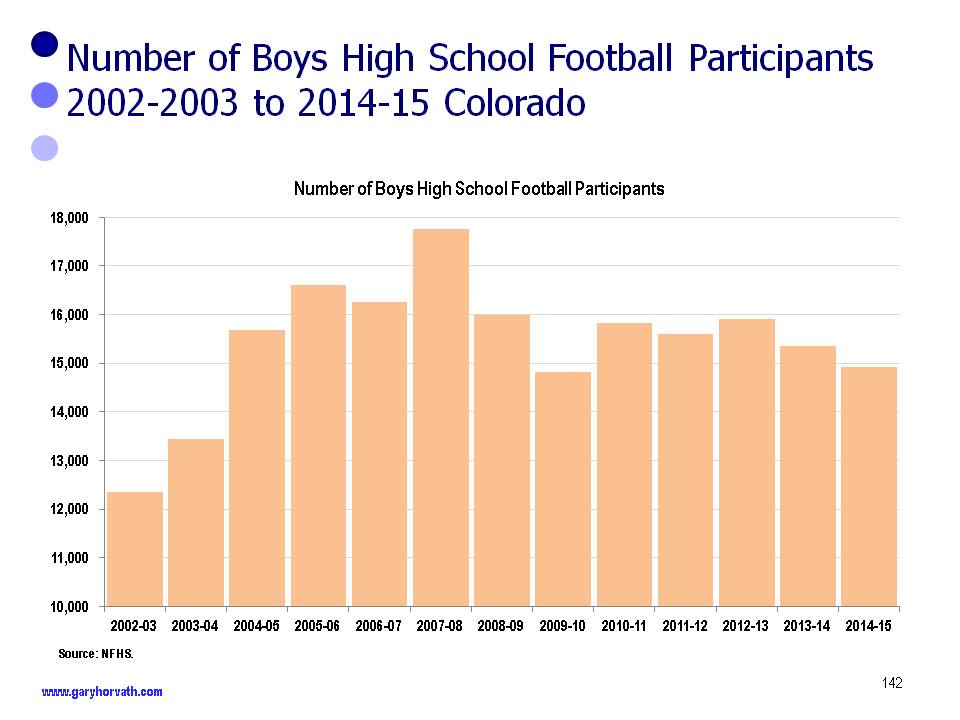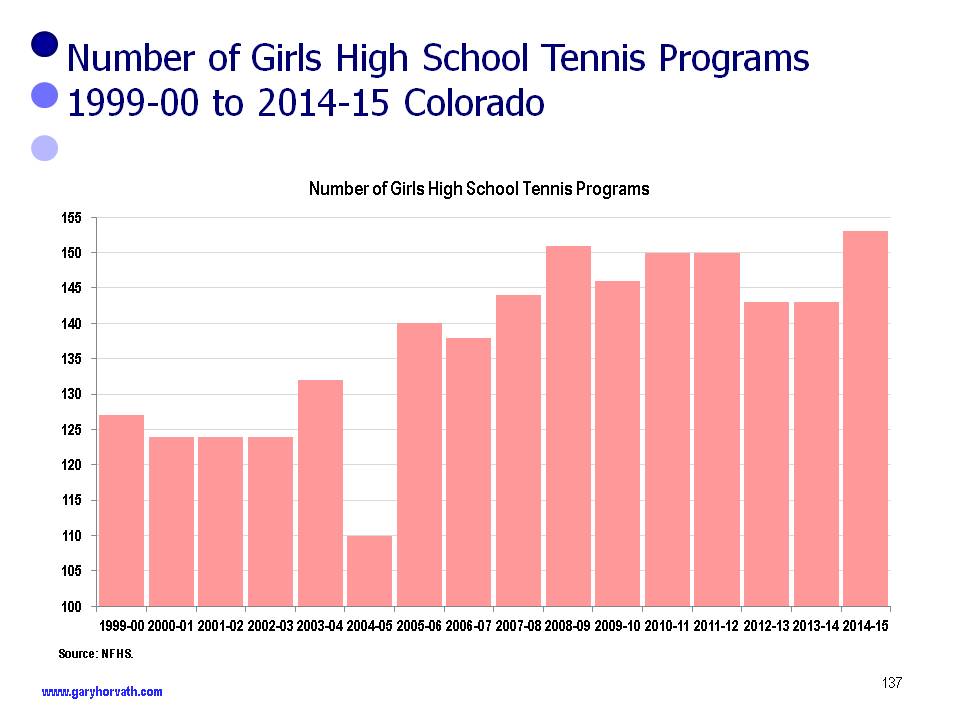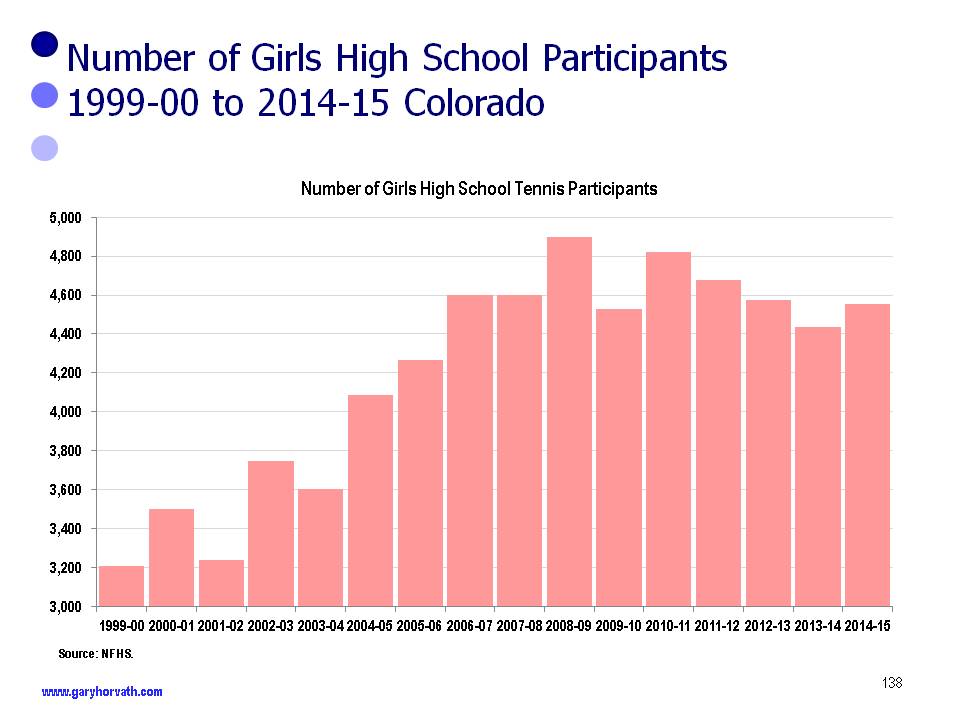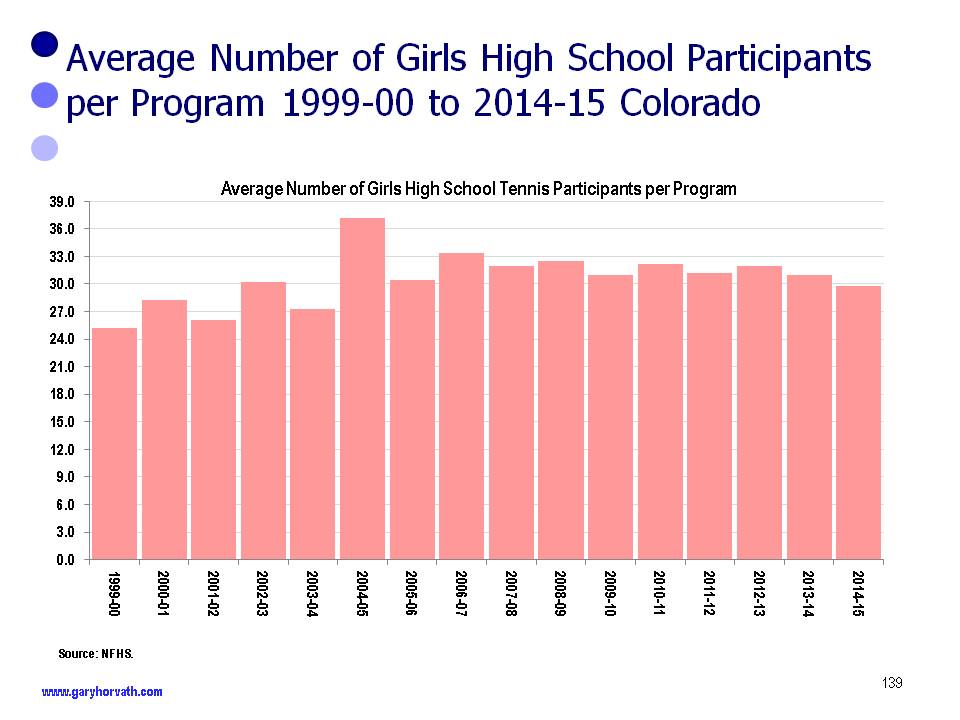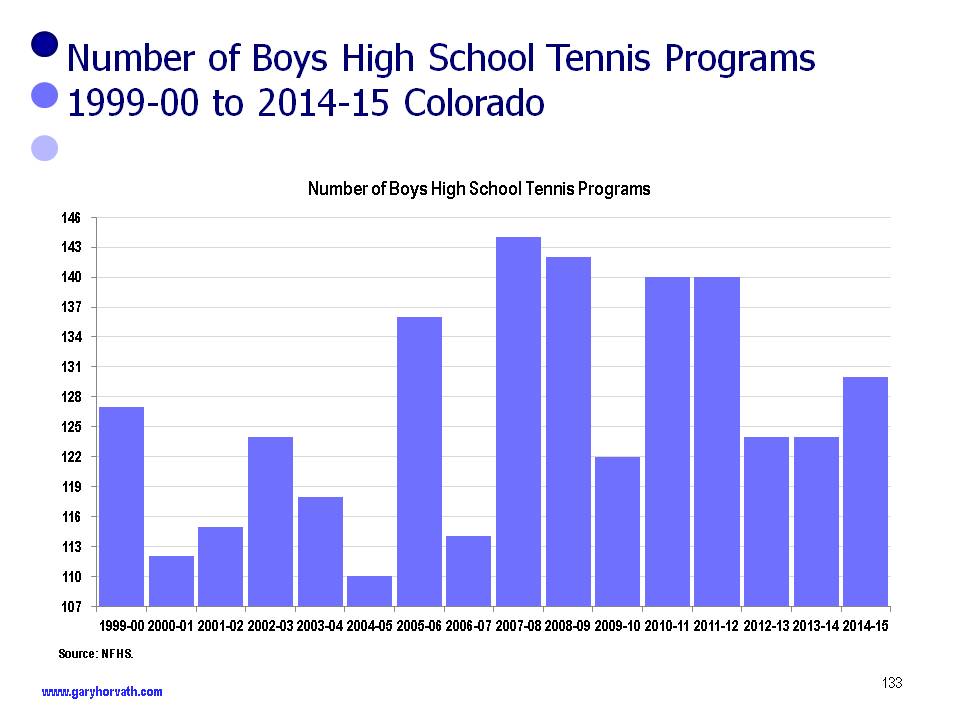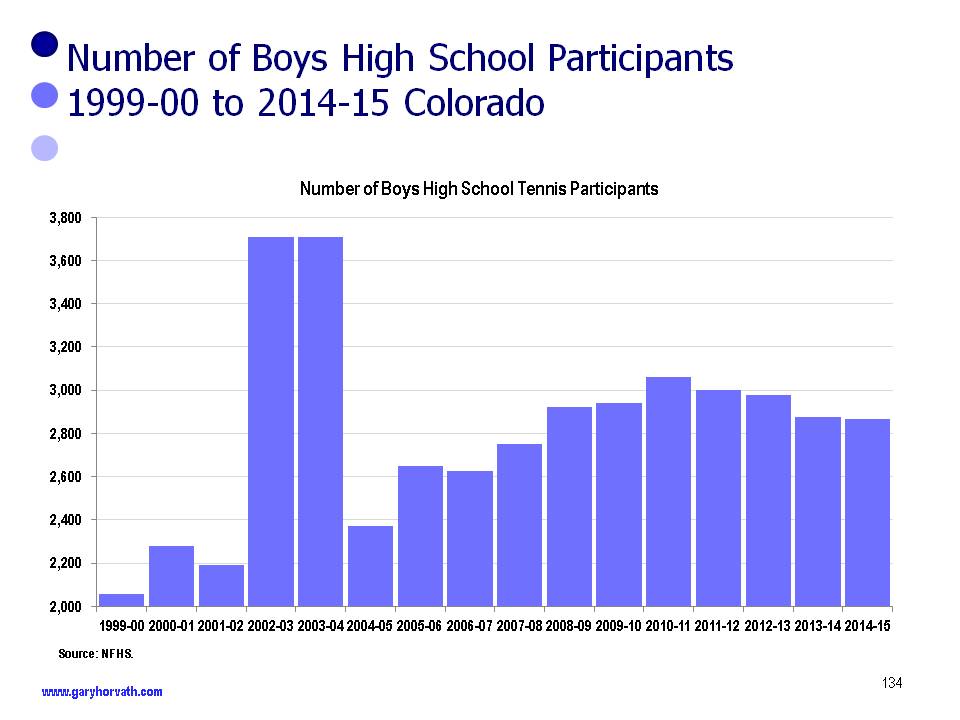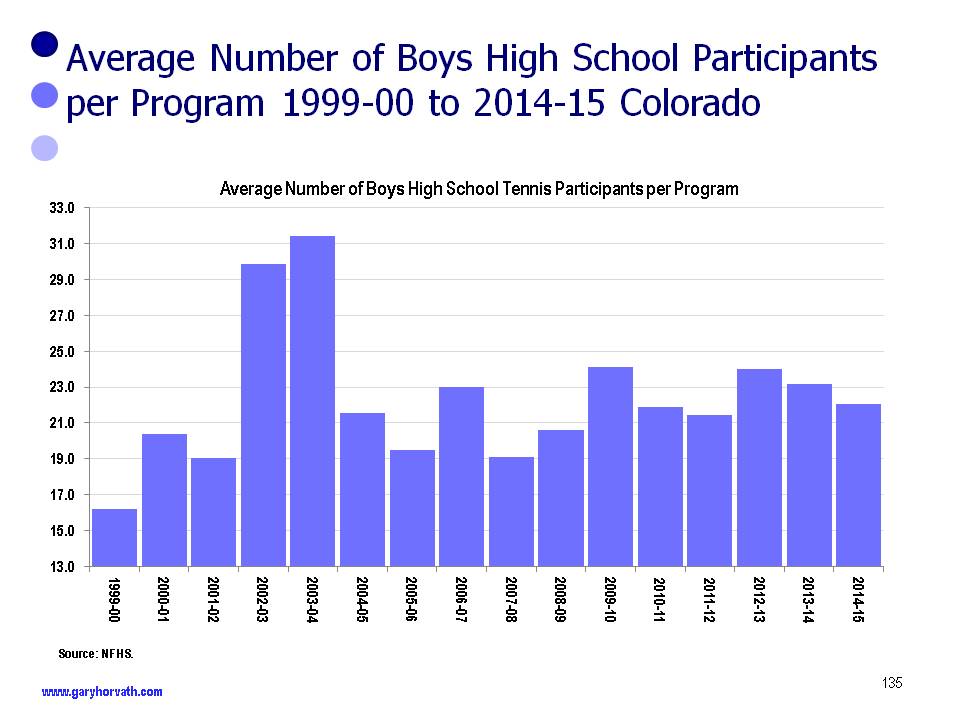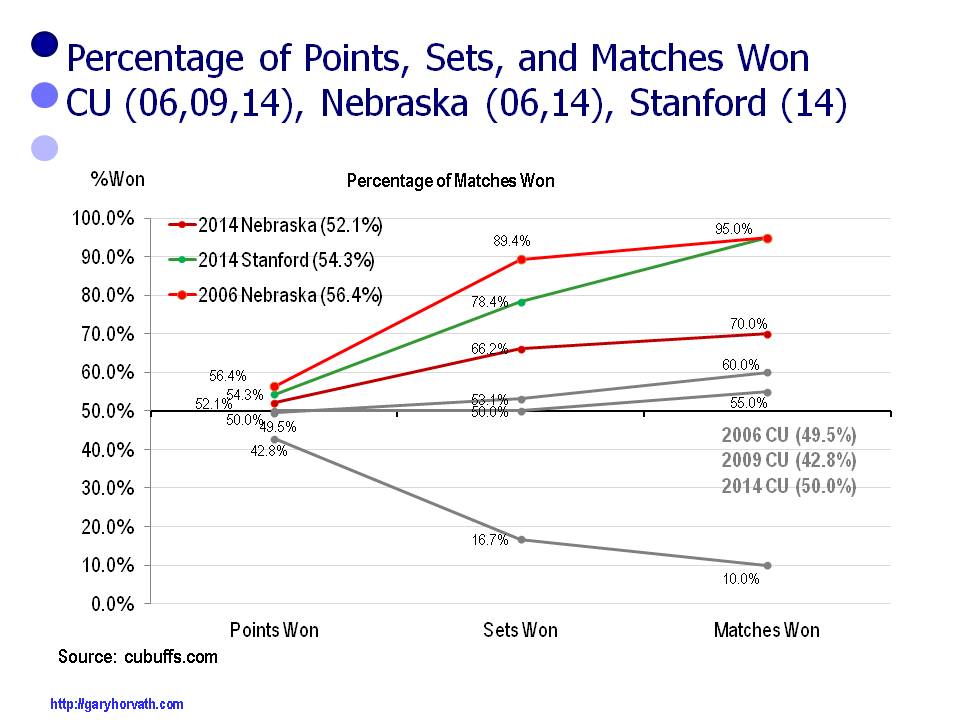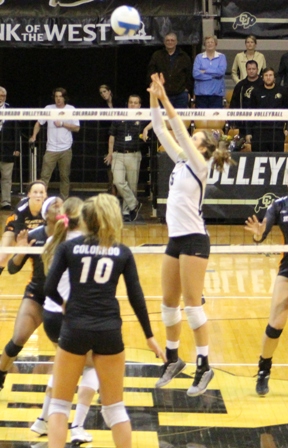Every year the Colorado high school spring sports season kicks off in mid to late February 29. For tennis fans that means about 4,500 girls will be hitting the courts in 150 locations. The boys are lucky. Their season is in the fall.
More precisely, the NFHS reported that 4,552 girls played on 153 teams during the 2014-2015 Colorado high school girls season. Despite the popularity of tennis, the number of participants has tapered off since a peak in 2008-2009. That season there were 151 programs and a peak of 4,901 participants.
The varsity season can be summed up as follows:
• The varsity season spans 59 days with a starting date of February 29th and an end date of April 27th, the final day of the regional tournament.
• There are 38 school days during the season and there are 21 scheduled off days. There will be 31 days of matches and practices and 28 days of unscheduled and scheduled off days.
• During the season, there are approximately 29 hours spent in practice and 21 hours spent in competition.
More specifically, the activity for the varsity season can be classified in four categories: competition, practice, unscheduled off days, scheduled off-days.
• Competition (matches and tournaments) CHSAA restricts the number of tournaments and matches that teams can play.
― It is estimated that players will play 4 matches in 3 days of tournaments. Those four matches will each last 1.5 hours per match. Athletes will play 6 hours in tournament competition during the season.
― It is estimated that players will play 10 days of dual matches. The average time of each match will be 1.5 hours. Approximately 15 hours will spend playing dual matches.
― The total time spent in competition is 21 hours.
• Practice and challenge matches – Coaches will plan to have 25 days for practice and challenge matches. In a best case scenario they will get 18 days for these activities.
― It is assumed the team will spend 3 days playing challenge matches or mini-matches to determine the lineup. During this time, a player will play 3 matches/mini matches. On average each of the 3 matches will take 1 hour, for a total of 3 hours.
― The team will have 15 days of practice scheduled for 2 hours. In a best case scenario a team will practice for 1.75 hours on those 15 days for a total of about 26 hours.
― The total time on court is about 29 hours. This is a best case scenario.
• Unscheduled off-days – As previously mentioned, coaches plan for 25 days of practice and challenge matches. Inevitably, there are at least 7 days where no time is spent on the court.
― The biggest challenge facing spring sports is the weather. There is usually at least 5 days where there is inclement weather. During some years this number may approach 10 days.
― There will be at least 2 days for school-related activities where no tennis is played. This includes photo days or unforeseen events. Sometimes coaches will give the team time off after they have played back-to-back matches. Other coaches give players the Friday off before Spring break.
― This estimate projects there will be 7 days when players are involved in non-scheduled activities. That number may be as high as 12 days.
• Scheduled off-days – During this 59-day period there are 21 scheduled off-days.
― There are 5 days for spring break.
― There are 16 weekend days.
The total on-court activity is 50 hours during the 59 day season. This breakdown is similar at many of the top schools and will vary based on the weather, qualifications of the coach, budget, and the number of players and courts.
It is great that girls have an opportunity to play in a high school tennis program. At the same time it is a challenge for high school athletic departments to make the program meaningful for the athletes given that most programs face significant budgetary and facility challenges and the fact the athletes have limited time in competition and practice while they are in the program.

